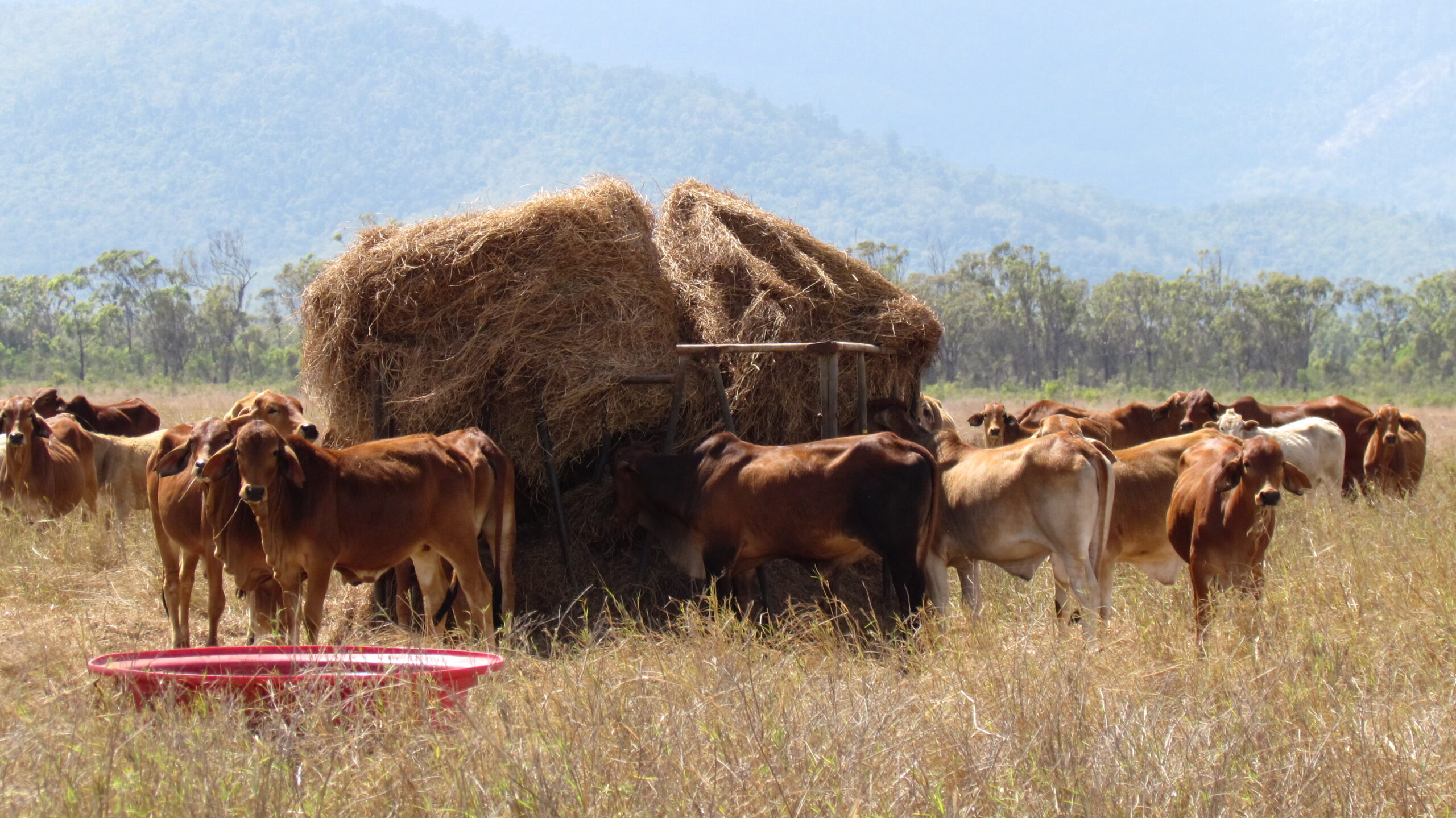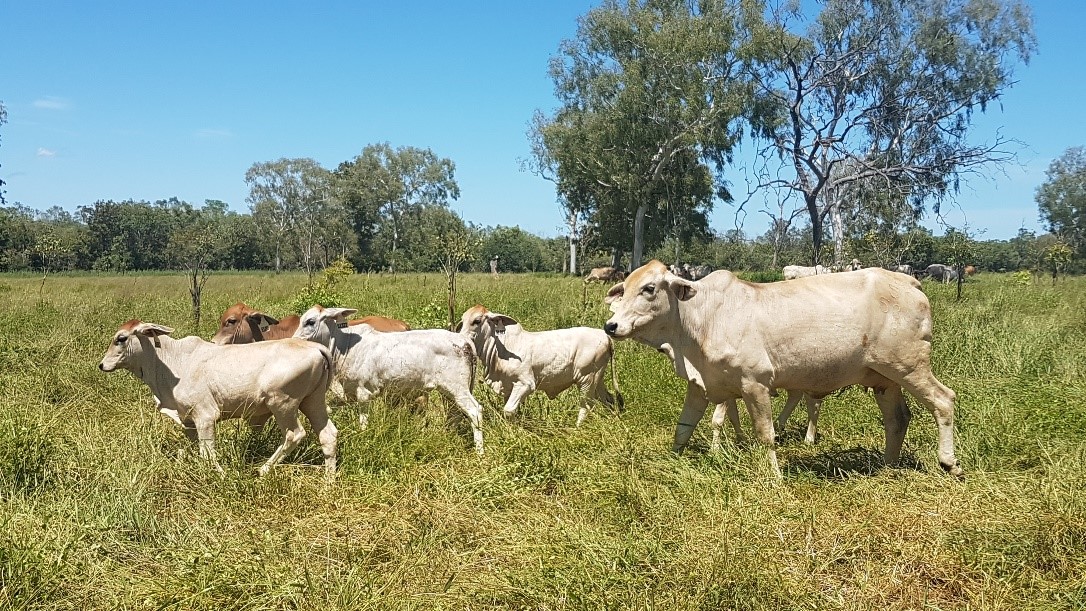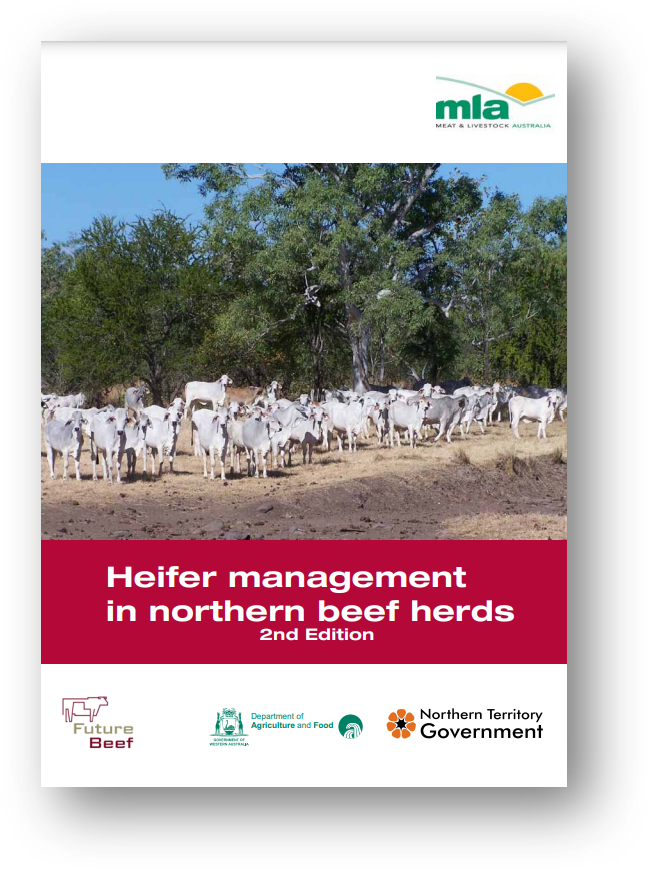Heifer management
Key messages:
- Critical mating weight (CMW) is the minimum weight at which heifers should be mated to ensure they have the greatest chance of cycling when they are first joined.
- Heifers reach puberty at an average of two-thirds of the average weight of an operation’s mature cows (i.e. five year old cows in score three condition).
- Under normal, healthy conditions, 95% of cycling heifers will conceive within three cycles or nine weeks.
- Good mating management and weaning management will ensure reduced losses and improved second calf conception rates.
- Heifers that are slow to conceive at their first joining are likely to become slow breeders, and should be culled.
- Bulls should be vaccinated against vibrio.
- Age and weight at puberty are heritable.
- Use objective selection methods.
A good heifer management program is an essential component in overall reproductive management and ensuring performance of the breeding herd. Good heifer management achieves early puberty, higher weaning rates, low mortalities and early identification of females for turnoff. The objective is for only efficient breeders entering the main cow herd at 3.5 years of age.
A good heifer management system is required because:
- Heifers suffer greater nutritional demands than cows as they are attempting to reproduce and grow simultaneously.
- Unless mating is well controlled, a high proportion of heifers can have their initial lactation during a dry season, because puberty can be reached at any time. Usually only well-managed heifers will conceive during their initial lactation.
The above factors result in low calf output and high mortalities. As well, inappropriate timing of initial lactation, coupled with poor nutrition, may permanently stunt heifers, thus reducing their turnoff value.
A good heifer management program should have the following components:
Heifer control
Critical mating weight
Mating
Nutrition
Weaning
Selection and culling
Disease control
Genetic improvement
Heifer control
Most properties require a third of the area allocated for females in which to graze heifers. At a minimum, a sound heifer management system requires two secure paddocks, one being twice the size of the other. The smaller paddock is for weaners. At 18 months these should be transferred to the larger paddock.
At three-and-a-half years of age selected heifers are transferred to a mature breeder paddock. If further paddocks are available, segregate heifers on age or management needs, such as pregnant versus non pregnant, turnoff versus breeding.
Desired critical mating weight (CMW)
Critical mating weight (CMW) is the minimum weight at which heifers should be mated to achieve a high pregnancy rate when first joined. Weight is one of the most significant influences over timing of heifer puberty.
Having an idea of CMW well in advance helps producers manage nutrition, and therefore growth and weight, to achieve high pregnancy rates.
In the past, there has been a tendency for producers to rely upon standard rules of thumb. An example is the widely used figure of 280 kg as the weight at which to first join heifers. However, producers need to take the time to properly consider the specific CMW for their individual circumstances.
CMW will differ between breeds and the average weight of mature cows. CMW takes account of:
- expected average and variation in weight at puberty (average weight at puberty is typically two-thirds of mature cow weight and variation is high)
- time of heifer selection
- period of mating
- the time taken for healthy cycling heifers to conceive
- the target pregnancy rate
- sire effects.
CMW should not be confused with average weight at puberty and average group weight at mating, both of which are much higher.
It is important to remember an average weight for puberty means that only half the heifers in the mob will have reached puberty at this weight. A heavier average will ensure most heifers will have reached puberty before the end of first joining so they can conceive.
Heifer mating management
When considering what time of year is best for joining, it is recommended to synchronise lactation with the wet season. Pairing first lactation with the onset of the wet season will improve the chance of heifers successfully rearing calves and re-conceiving during the first or second lactation. A heifer that calves with the wet season is much easier and cheaper to manage than one that calves out of season.
As a general rule, once females begin to cycle, a joining period spanning three cycles or nine weeks is required to achieve a 95% pregnancy rate. About 90% will get pregnant within a couple of cycles and 95% within three cycles.
A bull ratio of 2–2.5% is recommended. Bulls should pass a Bull Breeding and Soundness Examination or BBSE. This is even more important if single sire mating is used.
Weaner heifer nutrition

Nutritional management is important so that heifers:
- reach desired critical mating weight (CMW)
- are in body condition score 3 or better at calving
- maintain adequate body condition and growth during their first lactation.
Weaner nutrition is critical as poor growth in this period can increase weight at puberty, thus reducing lifetime fertility. A simple approach is to manage nutrition to keep heifers well above maintenance so their skeleton keeps growing. For more information see Weaning – a critical component of herd management and Weaner supplements.
Yearling and older heifer nutrition
Heifers must have access to adequate pasture, water and supplementation to keep them in the best possible condition. When heifers (and older breeders) lose condition prior to calving, their reproductive systems tend to shut down, significantly reducing chances of re-conception during lactation.
Good heifer nutrition starts with good pasture management and grazing management. Seasonal conditions, pasture condition, country type, stocking rates, land condition, and grazing management all greatly influence pasture quality and quantity. Both pasture quantity and quality are important because both affect pasture intake and hence the nutritional status of the animal.
In most dry seasons in northern Australia, there is a dietary shortfall of protein, and sometimes energy, for breeding animals. The gap between what cattle need, and what the pasture diet is supplying, limits production. Once the shortfall has been determined it can be addressed with supplementation (e.g. urea based supplements) in a cost effective manner. For more information see Assessing pasture diet quality (NIRS) and Protein and urea supplementation.
Supplementation may be required to enable pregnant heifers to cycle again following calving.

Spike feeding stimulates recovery of healthy egg development before lactation commences, allowing heifers to cycle sooner after calving. An example of spike feeding is to provide a high quality supplement (e.g. M8U) to late pregnant heifers for a short period in the late dry season. Doing so increases conception rates following calving by an average of 15%. Feeding should be for a minimum 50 days, starting 6-8 weeks before calving is due to commence.
Wet season supplements may be necessary to correct major mineral deficiencies. These can also have a significantly negative impact on feed intake, growth rates and fertility. The key mineral deficiency in northern Australia is phosphorus. Heifers grazing grossly deficient country should be provided supplements including phosphorus all year round.
Management of weaning
Weaning removes the stress of lactation and may reduce further body weight loss of the lactating first-calf heifer. Maintaining body condition will assist the heifer to recommence cycling if she hasn’t already, and allow her to be in better condition next season. The more conceptions during the next lactation, will result in more calves the year after, leading to higher steer sales in the future.
It makes sense then that weaning is a critical component of a good heifer (and breeder) management program.
Calves from heifers should be weaned first, with all calves weaned at first round. Weaning calves earlier than normal should increase the chances of heifers cycling and conceiving following calving. However, in certain situations heifers may require supplementation to commence cycling again as discussed above.
Selection and culling

Many producers over-mate heifers and then remove/cull surplus heifers based on pregnancy test results. Empty heifers that have had ample opportunity to conceive, are sub-fertile or infertile. Non-profitable animals such as these, and their genetics, need to be removed from the herd.
Depending on the overall results and replacement numbers required, heifers that will calve late (as a result of late puberty) can be culled as well (or identified for future reference). Other traits which should be considered when culling include temperament, growth rate, ability to hold condition, and physical defects.
Where over-mating is not conducted, only heifers from dams with proven fertility should be selected, as some important fertility traits are heritable. It is also important to use sires with above breed average EBVs for scrotal size, and days to calving.
Disease control
The primary recommendation for vibriosis control is to use vaccinated bulls. Where the disease is rampant, vaccinate heifers prior to mating, but be careful to weigh up the cost-benefit given the cost of vibriosis vaccinations. Readers may be interested in this case study from a property in the Mackay region: Catching a killer — Vibriosis.
With pestivirus, existing levels of herd immunity can substantially influence control strategies. Take advice from your cattle vet when considering whether vaccinations should be used prior to mating.
Vaccination against botulism should be standard practice because of the disease’s endemic status throughout Australia.
Genetic improvement
Both age of puberty and weight at puberty are highly heritable. Sire-effects alone can account for variations of at least 100 kg in weight of puberty of female puberty. Additionally heifers that conceive early in the joining period can be identified and recorded for future reference as potential fertile breeders.
There is a genetic correlation between scrotal size in bulls and age of puberty in their daughters. Objective selection of bulls with above breed average scrotal size EBVs will assist in making genetic progress. For more information see Improving fertility traits.
Written by Felicity Hamlyn-Hill, formerly Queensland Government, and Geoffry Fordyce, Queensland Alliance for Agriculture and Food Innovation.
More information
FutureBeef recommends interested readers attend a Breeding EDGE workshop for more in-depth information and heifer management suggestions.
Managing heifers pre-joining to improve reproductive performance (MLA) →
Heifer management in northern beef herds (2nd edition) →
